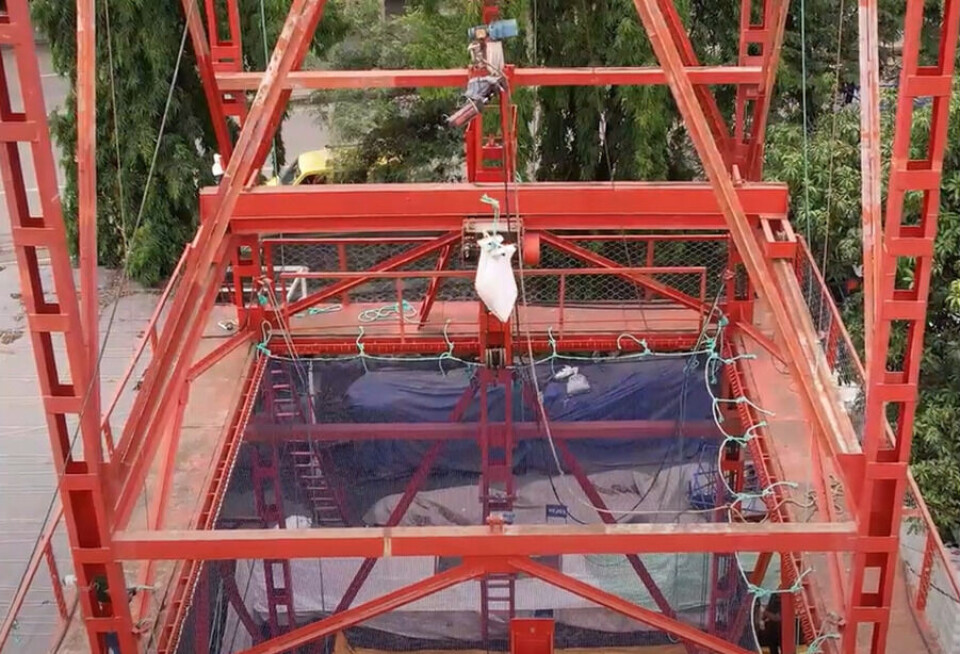ANNONSØRINNHOLD

Garware Technical Fibres’ CFR Nets Set a New Standard in Overcoming the Tuna Fish Challenge in Aquaculture.
Marine Aquaculture is one of the fastest growing industries in the food sector and contributes significantly to the national economy of many countries. Globally commercial salmon farming has evolved into one of the most developed sectors in the food industry over the last decade.
The salmon farming industry have bigger fish to fry on a daily basis than worry about a giant tuna fish bursting through their net cage only to cause a massive hole in the net, thereby potentially leading to a major environmental disaster with thousands of fish escaping into the open sea. Fish escapes are not only expensive but can also lead to heavy penalties due to strict environmental norms. Additionally, the fish can also create cross-breeding problems with their wild counterparts.
Fish health and fish welfare
The key focus of a fish farmer is fish health and fish welfare. In an ideal world a fish farmer would prefer to just have to feed the fish on a daily basis and not worry about any other issues, however the salmon farming industry has already been dealing with several biological and environmental challenges such as marine ectoparasites, bacterial and viral infections, biofouling on nets, predator attacks such as dogfish and seals, to name a few, resulting in big economic losses.
Least that the industry wanted was another challenge to deal with. Latest among the existing problems is hungry tuna fish ramming into fish nets, causing a hole in the nets. Off late the tuna fish-salmon farm interactions have increased and the number of reported accidents has risen since the first reporting a few years ago.
There is still ambiguity on the actual reason for this increased number of Tuna fish attacks on salmon farms. Some theories suggest accidental crash into a salmon farm net, while other theories include that the tuna fish deliberately break into the cage for the salmon or the salmon feed while some theories suggest they see the salmon in the cage as a school of mackerel, a fish that tuna chase on a daily basis which is their staple diet.
Resisting predator attacks
Garware Technical Fibres Ltd. (GTFL), an innovative technical textile company and leading solution provider for aquaculture nets, ropes and lice skirts, has taken the Giant Tuna fish challenge head on. Since the reporting of one of the first incidents of Tuna fish attacks, GTFL starting researching on the subject and came up with an innovative, patent pending solution, called Sapphire CFR. This high strength-to-weight ratio netting has a unique combination of polymers that act together in unison and is suitable for wide range of site conditions. Sapphire CFR has been designed specifically to absorb shocks, resist cuts and impact thus making it ideal to resist predator attacks such as tuna fish, dogfish, seals etc.
To understand the impact of Tuna fish on a salmon net, GTFL designed a simulation test and built a “Steel Tuna” as shown in the image below. This 200 Kg Tuna was dropped from a distance of 5 meters on to the different net panels to study the damage on the net due to the impact.

Link of the test video - https://youtu.be/zPniMh08JNY
A 1989 study showed an Atlantic bluefin tuna can swim up to 33 mph (53 km/hr) however have known to also swim up to speeds of 43 mph (70 km/hr). GTFL researchers used Sir Isaac Newton’s gravitation theory to simulate similar speeds using gravity. The “Steel Tuna” was allowed to free fall on to the net panels.
Several nets were tested including the traditionally used Nylon net, standard High Density Polyethylene (HDPE) nets, HDPE nets with Steel wire cores, and Sapphire CFR. The “Steel Tuna” directly passed through the Nylon net panel in wet condition making a big hole in the net, whereas the standard HDPE nets and the HDPE net with Steel wire core showed some resistance yet allows the “Steel Tuna to pass through making a large enough hole, only Sapphire CFR net took on the “Steel Tuna” head on and was able to intercept it.
A recent article in Fish Farmer magazine reported by Mr. Vince Mcdonagh cites experiences by farmers talking about inability to spot the tuna fish by feed cameras. More often than not, the presence of tuna fish in the cage is determined by the detection of a hole in the net. In almost all incidents, the breach is reported to be around 60cm in diameter. GTFL has been actively working on a solution for this as well. GTFL has developed a patent pending solution called IntelliNet. This is the fish farming industry’s first smart net solution that can detect and report a break in the net the instant it happens. This unique solution monitors the net cage 24/7 allowing the farmer to focus primarily on fish health and fish welfare.
About Garware Technical Fibres Limited
Garware Technical Fibres Ltd. is one of India’s leading players in the technical textiles sector. Established in 1976, the company today is a multi-divisional, multi-geographical technical textiles company and is known for providing world class innovative solutions in high performance aquaculture cage nets, fishing nets, sports nets, safety nets, agricultural nets, coated fabrics, polymer ropes and geosynthetics.
A thrust on international business over the years has seen Garware Technical Fibres global footprint growing steadily. We have six overseas offices and customers in over 75 countries.
Visit Garware Technical Fibres on https://www.garwarefibres.no/ to know more.